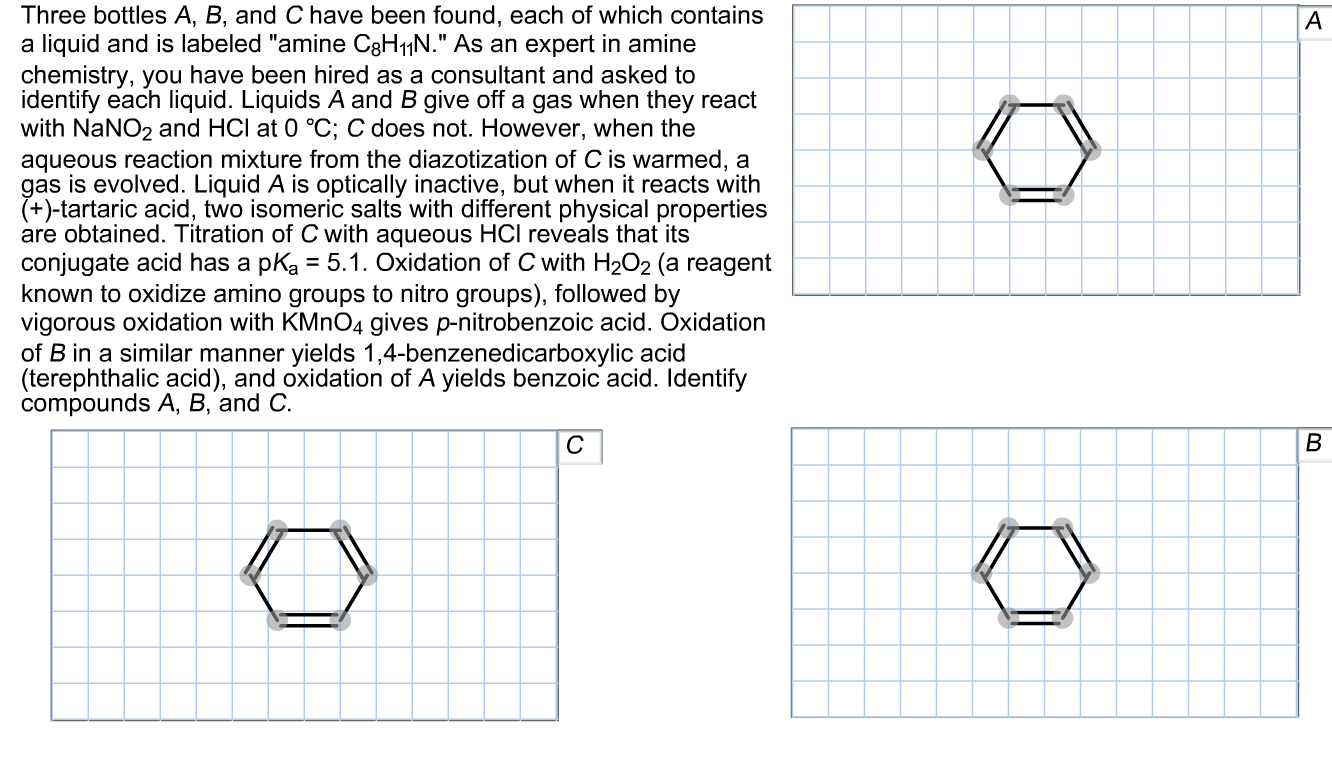Three bottles A, B, and C have been found, each of which contains a liquid and is labeled "amine C3H11N." As an expert in amine chemistry, you have been hired as a consultant and asked to identify each liquid. Liquids A and B give off a gas when they react with NaNO2 and HCl at 0 °C; C does not. However, when the aqueous reaction mixture from the diazotization of C is warmed, a gas is evolved. Liquid A is optically inactive, but when it reacts with (+)-tartaric acid, two isomeric salts with different physical properties are obtained. Titration of C with aqueous HCl reveals that its conjugate acid has a pka = 5.1. Oxidation of C with H2O2 (a reagent known to oxidize amino groups to nitro groups), followed by vigorous oxidation with KMNO4 gives p-nitrobenzoic acid. Oxidation of B in a similar manner yields 1,4-benzenedicarboxylic acid (terephthalic acid), and oxidation of A yields benzoic acid. Identify compounds A, B, and C. A
Three bottles A, B, and C have been found, each of which contains a liquid and is labeled \"

Trending now
This is a popular solution!
Step by step
Solved in 2 steps with 1 images









